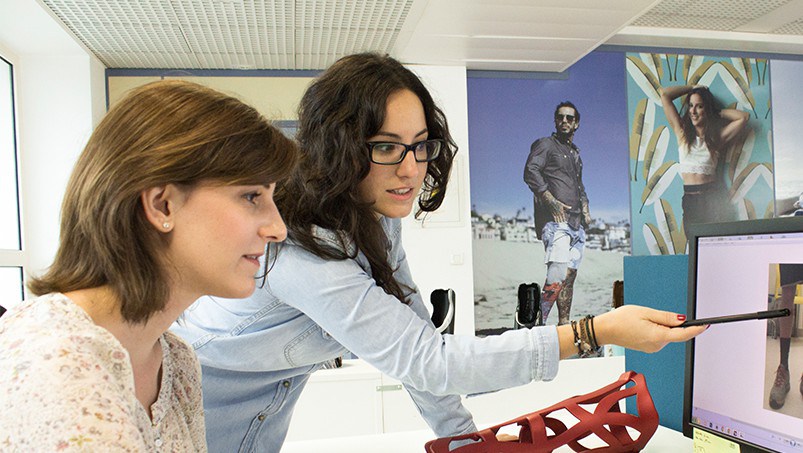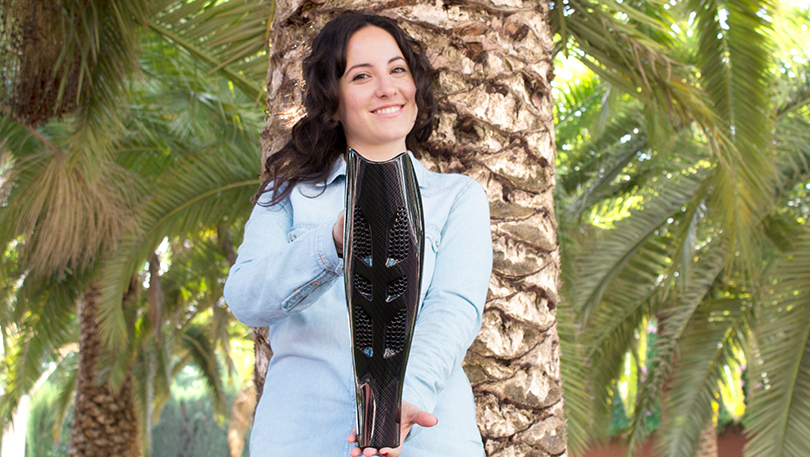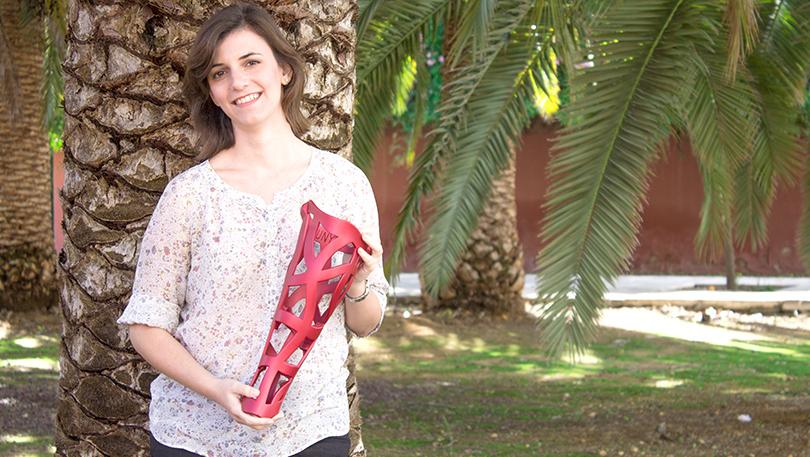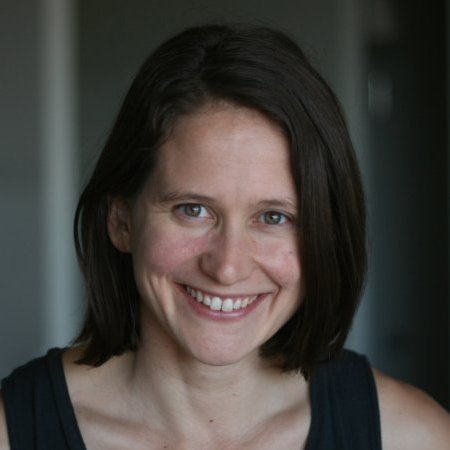
This article originates from Women In 3D Printing and is part of our effort to support the use of 3D printing technology by women. The article is re-published with permission.
Sonia Diaz and Ana Rodriguez are designers and digital manufacturers at UNYQ, a company that 3D prints stylish prosthetics and orthotics. Based in Sevilla, Spain, they took different educational tracks to become industrial designers. They use photogrammetry and 3D modeling everyday to create personalized prosthetic covers for amputees.
What is your background and why did you choose to go into this field?
Sonia (S): I graduated as an Industrial Engineer. I started my professional career in the aeronautical industry where I had the chance to work on several projects for Airbus and for other leading aeronautical companies. I decided to study engineering because math and science were my favourite subjects. I really enjoyed pursuing an industrial engineering degree because I love problem solving. I’m a curious person by nature so I always incorporated different fields into my education to become as well rounded as possible.
Ana (A): I started studying Industrial Design Engineering because I was attracted to the idea of making useful things from conception to the final product. In other words, to make everyday things in a beautiful way. Later in university, I learned a new perspective that furthered my love for design– good design leads to three things: it has to be 100% functional, is has to solve a problem and of course, it has to be beautiful or attractive. Now, I’m working as an Industrial Designer at UNYQ where we make functional products that solve a big problem and we try to make them as cool as possible! I’m very interested in 3D printing because of its multiple uses.

Were there many women in your university programs? How do you think we can get more women involved in engineering / design / etc. in Spain?
S: In my first year of Industrial Engineering studies, there were just six women in a class with a hundred people. However each year the number of women seems to be increasing. I think a good way to get more women involved in engineering would be to talk more about achievements of women in this fields. Taboos need to be broken, engineering and design are not a men-only business.
A: Actually, I think the ratio in my program is almost 50/50 and it has been increasing year after year. Unfortunately it’s not the same for the rest of engineering programs as Sonia said. I think this happens because design is more of a neutral path, as the arts for example. In the past most designers were men, who came from other disciplines such as engineering or architecture mainly. I don’t want to fall into the cliché but design needs a big sensibility and taste, aspects which are very feminine, so I think that’s why the ratio in product design is balanced. Personally, I think the reason why women don’t go for engineering is an educational or cultural aspect. If women go for science it’s mainly chemistry or biology or something similar, engineering is still a male territory. It’s changing but we have to encourage girls to do whatever they want and to get out of the comfort zone.
What was your first experience with 3D printing?
S: My first experience in 3D printing was at university. At that time, it was a new technology so I didn’t get an indepth training. Later I met two colleagues at work who had their own 3D printer. They used to talk about their printers with so much passion that it made me want to know more. I started to research about this technology. I was amazed by all the possibilities and manufacturing applications that 3D printing has, so I decided to find a job where I could keep learning about this field, and that’s when I found UNYQ.
A: My first experience was at college. We studied the different 3D printing techniques and there was even a 3D printer (which we couldn’t use by the way, because it was too expensive to make anything). But my first real experience is right now at work. I see 3D printing around me a lot more lately. I have friends who are freelance designers and have tried 3D printing as a technique for making their products. I also have a colleague who even builds his own printers in his free time, etc.
Can you describe some of the 3D modeling problems you solve on a daily basis?
S: On a daily basis, we work with photographs provided by our amputee users. We start making a 3D model of the missing leg using data from the sound leg. This allows us to create a product that restores the amputee’s sense of symmetry. Once we have this, we use photogrammetry to measure the prosthesis and we design a clamping system adapted to each client. The problems we face in 3D printing are related to the non-uniformity of the material which blocks the nozzle of the printer. We work with different types of 3D printers and each requires constant supervision and maintenance of mechanical and electrical components.
A: Sonia has perfectly described our daily work. Our job consists on designing cosmetic prosthetic covers for prosthetic legs. It’s 100% personalized because each cover is designed for the specific prosthesis of each user with the external design they choose. We have to make sure the inner parts of the cover don’t interfere with the prosthesis and fit perfectly on it. When designing there are also restrictions for printing. We have to prepare the design so that it prints well and it doesn’t fall while printing, etc. Indeed it’s a very detailed job. We couldn’t make our products without 3D printing. Traditional plastic manufacturing is cheaper but for bigger batches. Since our products are made one by one, but at scale, it would be impossible to make it using traditional manufacturing in terms of time and expenses. For me, that’s also the value of this product, the exclusivity of personalization thanks to the 3D printing as opposed to one size fits all. Plus, it allows us to produce locally!

What applications do you see for 3D printing in the future?
S: In the future I think 3D printing will be integrated directly or indirectly in everyone’s life. As time goes by, 3D Printing is becoming more accessible, and in the future I think instead of buying, many items will be directly printed at home. I also see applications in aeronautics where 3D printing allows us to manufacture very complex parts and in medicine, with the bioprinting of tissues and other exciting developments.
A: Nowadays we can see food, clothes, legs or even houses made with 3D printing. In the early days it was considered a tool for prototyping but now we are using it for final products which is incredibly exciting. I see 3D printing as a new way of producing. I don’t think we’ll all have a printer at home, at least not in the near future. The technology still has to change to make it easy to use for an everyday consumer.
Evy Wilkins is the VP of Marketing at UNYQ, a company that is redesigning prosthetics and orthotics using 3D printing to create highly personalized devices. Originally from Minneapolis, Evy has lived in Washington, DC, Sierra Leone and France. She speaks English and French. Evy contributes to Women in 3D Printing by organizing events and contributing content.


